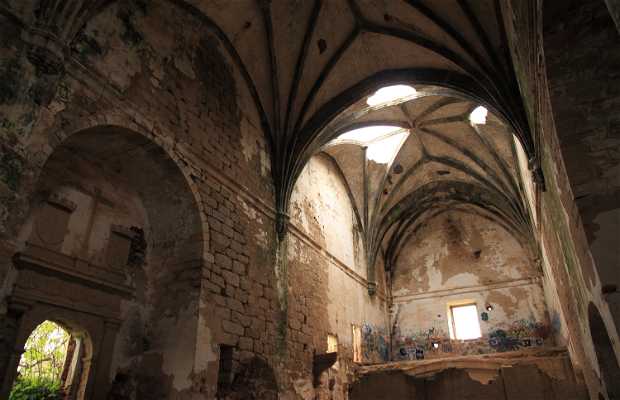Compartodromo
The Convent of the shame
El convento de la vergüenza
Íbamos por carretera y al pasar por el pueblo de Garrovillas de Alconétar nos llamaron la atención unas ruinas. No podíamos identificar de un primer vistazo si era un castillo o qué, pero lo que fuera estaba compuesto por varios edificios y resultaba muy grande, así que nos salimos por un camino para ir a verlo.
Resultó que aquello era un antiguo convento. Junto a él, una pintada en una puerta metálica daba alguna seña: "EL CONVENTO DE LA VERGÜENZA", decía.
La iglesia era muy monolítica, y sus muros habían resistido bien. El resto de las dependencias, sin embargo, estaban que daba hasta miedo. Llenos de pintadas, de cascotes, sin casi ningún techo en pie, algunos antiguos frescos de las paredes se empeñaban todavía en hacerse visibles a pesar de la degradación absoluta.
Entramos en la nave de la iglesia y allí daba impresión que esa bonita edificación estuviera en aquel estado. La bóveda tenía agujeros, habiendo un riesgo serio de desplome. Más pintadas. Restos de hogueras en las paredes. Un conjunto artístico echado a perder definitivamente.
Ya en casa, por Internet he averiguado que aquello fue un convento franciscano que se comenzó a construir durante el reinado de los Reyes Católicos, que tras la desamortización fue saqueado y destruído por algunos habitantes del pueblo en la primera mitad del s. XIX, y que después fue usado para guardar ganado, cosechas e incluso como fábrica. Algo que hoy es un asunto incómodo para sus gentes, que ya no pueden acometer su reparación ante la ruina prácticamente total del conjunto.
Lamentable historia, y de momento, lamentable final.
We were road and passing through the village of Garrovillas struck us ruins. We could not identify at first glance whether it was a castle or what, but whatever it was composed of several buildings and was very large, so we went out for a road to go and see. It turned out that this was a former convent. Beside him, a graffiti on a metal door was a sign: "THE CONVENT OF SHAME" he said. The church was very monolithic, and its walls had withstood. The rest of the units, however, were giving up fear. Filled with graffiti, rubble, with almost no foot ceiling, some ancient frescoes on the walls were bent still be visible despite absolute degradation. We entered the nave of the church and there was this beautiful print was in that state building. The dome had holes, having a serious risk of collapse. More painted. Remains of bonfires on the walls. An artistic ensemble definitely spoiled. At home, on the Internet I found out that this was a Franciscan convent that was begun during the reign of Ferdinand and Isabella, who after the confiscation was looted and destroyed by some villagers in the first half of the s. Century, and was later used to house livestock, crops and even as a factory. Something that today is an uncomfortable issue for his people, who can no longer undertake repairs to the almost total destruction of the whole. Unfortunate story, and so far, sorry end.



+6


